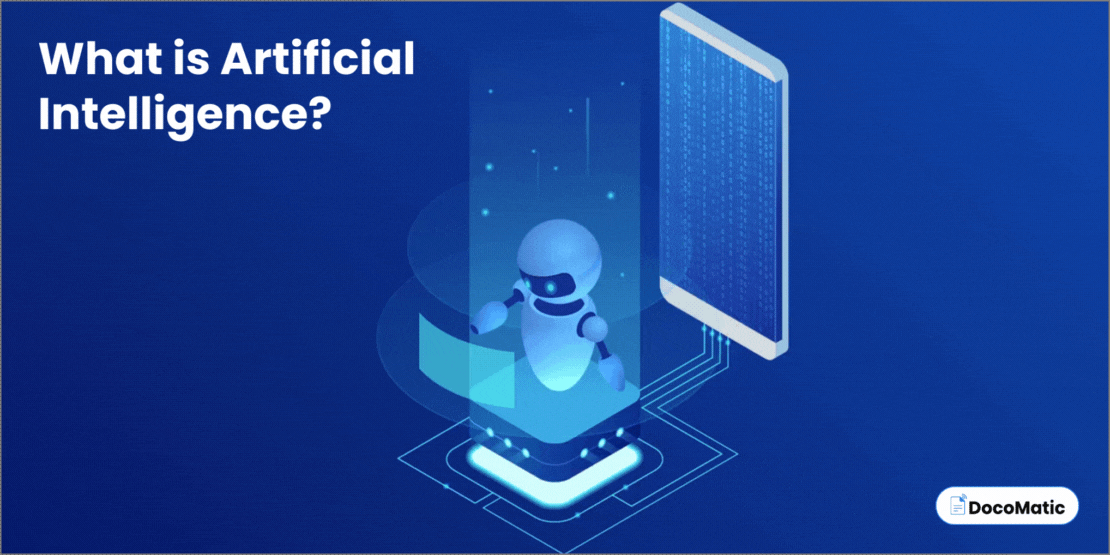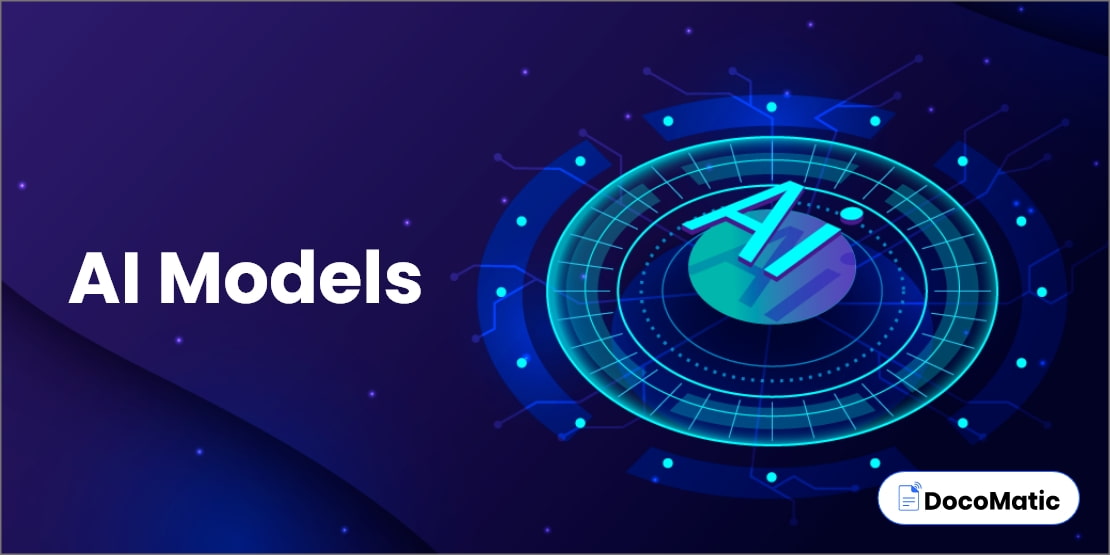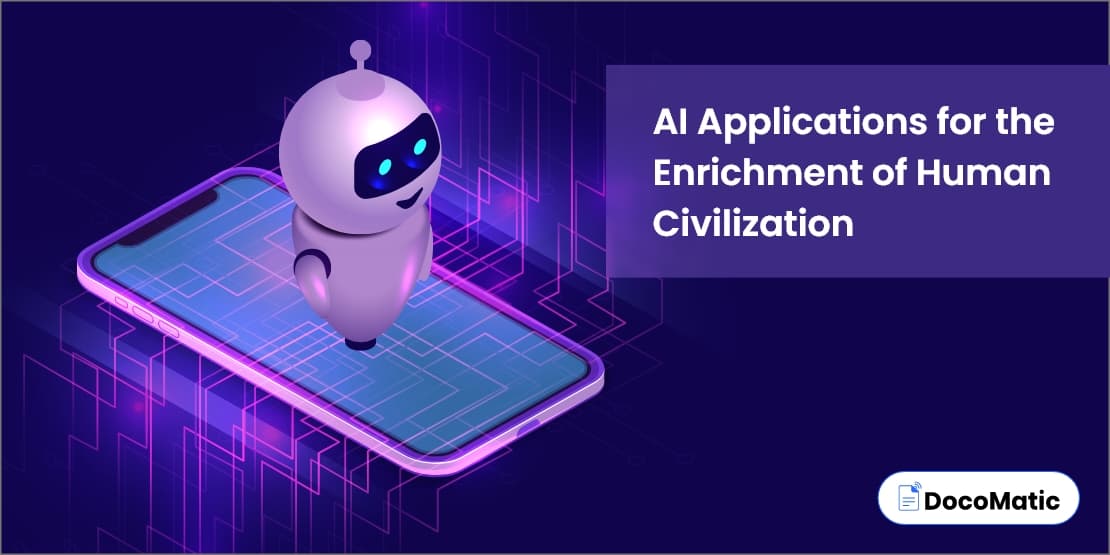The study of artificial intelligence (AI) has long piqued the curiosity of researchers and tech aficionados. The way we live, operate, and communicate with technology has been revolutionized in recent years as a result of AI, which has transitioned from the domain of science fiction to reality.
According to International Data Corporation’s (IDC) latest Global Artificial Intelligence Spending Guide, investment in AI systems will increase significantly from $85.3 billion in 2021 to more than $204 billion in 2025. This shows that AI is not only a trendy term but a technology that is influencing our future.
So, in this blog, we will understand what is artificial intelligence (AI) and explore the various types of AI, how they function, the industries in which they are used, their advantages and drawbacks, and the future potential of AI.
Table of Content
- What is Artificial Intelligence (AI)?
- Why is Artificial Intelligence Important?
- Types of Artificial Intelligence
- Categorizing Artificial Intelligence by Specific Capabilities
- How Does AI Work?
- Applications of AI
- Challenges and Risks Associated with the Use of Artificial Intelligence
- FAQs
- Embracing the Advancements of AI for a Better Future
What is Artificial Intelligence (AI)?
The term artificial intelligence (AI) is the creation of intelligent machines that can carry out activities that typically require human intelligence, including learning, reasoning, problem-solving, decision-making, perception, and language understanding.
To put it another way, artificial intelligence refers to the emulation of human intelligence in machines that have been designed to think, learn, and behave similarly to the human mind.
Robotics, computer vision, machine learning, natural language processing, and cognitive computing are just a few of the many subfields that fall under the umbrella of AI.
To analyze enormous volumes of data, find patterns and trends, and provide predictions and suggestions, AI systems employ sophisticated algorithms and mathematical models.
Why is Artificial Intelligence Important?
- Enhanced productivity and efficiency: AI can assist organizations in automating a variety of processes and operations, which cuts down on the time and effort needed to execute them. Organizations may be able to do more in a shorter period of time as a result of enhanced productivity and efficiency.
- Improved accuracy and consistency: AI is more accurate and consistent than humans in performing specific tasks, making it a vital tool in industries like healthcare and finance, in which even a small human error can have serious repercussions.
- Decision-making is improved: AI can evaluate enormous volumes of data and offer insights that humans might not be able to find. Better decisions could be made by businesses as a result, especially in the finance and marketing sectors.
- Ability to do dangerous or repetitive tasks: Artificial intelligence (AI) may be used to carry out repetitive or risky jobs that humans find tedious or dangerous, such as working in dangerous areas or carrying out menial chores in manufacturing facilities.
- Personalization and better customer experience: By using artificial intelligence to customize products and services, customers will have a better overall experience.
- Innovation and progress: Artificial intelligence is fostering innovation and progress across a range of industries, creating new products and services that were earlier unthinkable.
Types of Artificial Intelligence
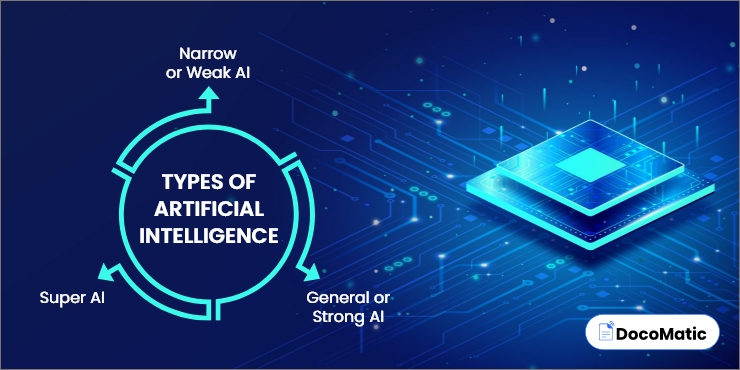
- Narrow or Weak AI
- General or Strong AI
- Super AI
Narrow or Weak AI
Often referred to as Applied AI, narrow artificial intelligence or weak AI is made to carry out certain specific tasks or collection of activities. This kind of AI is focused on resolving particular issues or accomplishing particular jobs; it is unable to carry out activities that are not specified in its programming. Speech recognition, picture recognition, and language translation are all a part of narrow AI systems.
Examples of narrow AI include virtual assistants like Apple’s Siri, Amazon’s Alexa, and Google Assistant. They are able to understand voice commands, do web searches, set reminders, and manage smart home gadgets, but they are unable to complete sophisticated jobs like book authoring or product design.General or Strong AI
Often referred to as Human-Level AI, general or strong AI is created to carry out any intellectual work that human intelligence is capable of. Like a human being, this kind of AI is capable of reasoning, problem-solving, making decisions, learning, and adapting to new circumstances. Researchers are still working on establishing general AI because it has not yet been completely developed.
Super AI
Also known as Artificial Super Intelligence, Super AI is a type of artificial intelligence (AI) that is superior to human intelligence in all domains. This kind of AI is speculative and has only been depicted in science fiction up to this point. Experts, however, believe that it could be feasible in the future. Super AI would be capable of doing things that are now not feasible for humans to do, such as solving difficult physics problems, creating new technologies, and making scientific discoveries.
Categorizing Artificial Intelligence by Specific Capabilities
Based on its unique capabilities, artificial intelligence can be categorized. These classifications aid in our comprehension of how AI functions and how different applications can make use of it. The four categories based on specific capabilities are as follows:
Reactive machines AI
Reactive machines are the most basic type of artificial general intelligence. They lack the capacity to remember past events or draw conclusions from them in order to guide present actions. Instead, they only function according to predetermined rules.
Reactive robots excel at performing particular activities, like playing chess, where they can assess the situation at hand and determine the best move to make based on pre-programmed rules.
Limited memory AI
Limited memory is the next stage of artificial intelligence. Future judgments can be influenced by these systems by using historical data. The AI can now consider prior experiences and modify its behavior. As a result, enabling more sophisticated decision-making skills.
A self-driving vehicle that can modify its path in response to traffic patterns or road closures is an example of limited memory AI.
Theory of mind AI
Theory of mind AI describes a computer program that can comprehend and interpret the feelings, ideas, and beliefs of individuals. These AI technologies are made to communicate with people in a way that seems more intuitive and natural. Moreover, they can assess the user’s emotional condition along with human behavior and modify their behavior accordingly.
As an example, consider a virtual assistant that can identify when a person is agitated and provide relaxing methods.
Self-awareness AI
The most sophisticated and advanced type of AI is self-awareness AI. They are mindful of their own existence and have a feeling of consciousness. Although it does not yet exist, this degree of machine intelligence is what AI researchers are ultimately aiming for.
Artificial intelligence (AI) capable of self-awareness would be able to reason similarly to humans about its own existence and the surroundings around it.
How Does AI Work?
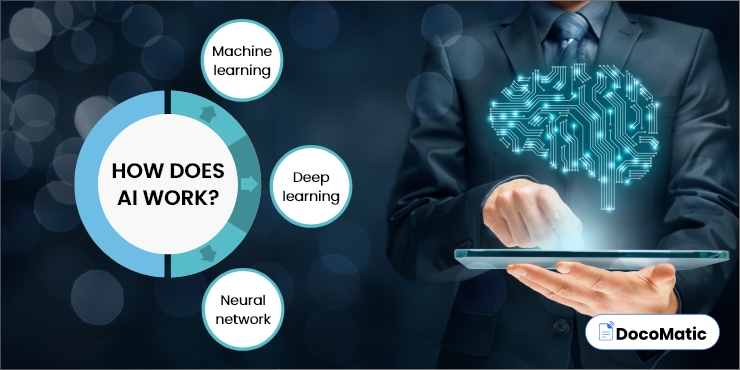
We will explore machine learning, deep learning, and deep neural networks in this section, as these are the techniques that are most frequently used to make machines do intelligent tasks.
- Machine learning
- Supervised learning: The machine is given labeled training data to learn from in supervised learning, and it may utilize this learning to generate precise predictions on new, unlabeled data.
- Unsupervised learning: Unsupervised learning is the process of teaching the machine to detect patterns on its own by giving it unstructured data.
- Reinforcement learning: With the help of a set of rewards and punishments, the machine can be taught to make choices that maximize rewards and minimize punishments through a process called reinforcement learning.
- Deep learning
- Neural network
Machine learning is an application of AI that gives the machine the capacity to gain knowledge through practice and enhance its performance without being explicitly programmed. In order to train the machine to recognize patterns and make precise predictions, enormous volumes of data must be fed into it.
Deep learning is a branch or subset of machine learning that focuses on the use of multi-layered neural networks for data analysis. Deep learning enables machines to predict accurately from unstructured and unlabeled data.
A neural network with numerous layers of linked nodes is used in deep learning. Each node processes the data mathematically and delivers the results to the nodes in the next layer. The last layer’s output is the prediction or decision taken by the machine.
Modern neural networks are a group of algorithms that are based on the structure and operation of the human brain. It is made up of layers of cohesive nodes that analyze data and make decisions.
Data is passed through several layers of linked nodes in neural networks to produce results. Each node of the neural network takes in data as input and applies a mathematical operation to it. The output of one neural network node is transferred to the nodes in the layer next to it, and so on until the final layer generates the output of the machine.
In conclusion, the three main technologies that allow machines to carry out intelligent activities are machine learning, deep learning, and neural networks. They enable machines to learn from past mistakes, identify patterns, and make precise predictions.
Applications of AI
AI has been used in many industries, and it has changed how these businesses function. Here are a few of the most significant applications of AI:
Healthcare
AI has made great strides in the healthcare industry. It has been applied to AI research relating to medicines, patient monitoring, and medical diagnostics. Large volumes of medical data can be analyzed using machine learning algorithms to find patterns that can be used for disease diagnosis and prediction.
Moreover, AI can monitor patients in real time and identify changes in their conditions, enabling doctors to respond quickly.
In order to find possible new medicines and quicken the medication development process, AI is being employed by scientific and medical teams in drug discovery.
Finance
For fraud detection, risk assessment, and investment analysis, AI is widely employed in the financial sector. Large financial data sets can be analyzed by AI-powered algorithms, which can then detect fraudulent transactions immediately.
Moreover, it can predict stock and other investment vehicle performance and assess market trends. In order to give banks and other financial organizations a more accurate risk assessment of potential borrowers, AI is being employed in credit score and loan approval procedures.
Manufacturing
From assembly lines to quality control, AI has been utilized to automate a number of manufacturing-related tasks. Industrial manufacturing procedures have been streamlined to reduce mistakes and increase productivity thanks to robotics and machine learning algorithms.
In order to anticipate equipment breakdowns and save expensive downtime, AI is also utilized in predictive maintenance.
Transportation
AI has completely transformed the transportation sector, with self-driving vehicles serving as the most prominent example. AI is employed to examine traffic patterns, choose the best routes, and ease congestion.
Also, to reduce collisions and enhance driver performance, AI-powered sensors, and cameras are employed in vehicle safety systems.
Customer service
Companies are using AI-powered chatbots and virtual assistants to enhance customer service. These chatbots can deal with straightforward client inquiries, freeing up human operators to deal with trickier issues. In order to make personalized recommendations and enhance the overall customer experience, artificial intelligence systems may also evaluate client data. If you want to create your own AI-powered chat assistant like ChatGPT, you can try DocoMatic.
Challenges and Risks Associated with the Use of Artificial Intelligence
Although artificial general intelligence has greatly benefited humanity, it has also presented significant risks and challenges. To guarantee that AI is utilized safely and ethically, it is crucial to address these risks and challenges.
The following are some of the greatest threats and challenges related to AI:
- Job displacement
The loss of jobs due to AI is one of the biggest worries. As it develops, the AI system is more capable of taking the place of human workers in some activities. In some industries, this can result in job losses and economic turmoil.
A World Economic Forum analysis claims that by 2025, the widespread use of AI may result in the loss of 75 million jobs globally.
- Ethics and bias
The potential for bias and ethical issues with AI present another difficulty. AI systems may be biased if they were trained on unrepresentative data or if biased techniques were utilized to create the AI.
For instance, it has been demonstrated that face recognition technology discriminates against women and people of color. It’s crucial to make sure AI systems are created and applied responsibly and do not reinforce or magnify existing biases in society.
- Privacy and security
Large volumes of data are collected and analyzed by AI systems, which raises questions regarding security and privacy. AI systems themselves could be subject to attacks, and malicious actors can utilize AI to launch cyberattacks.
AI systems could also be used to violate people’s privacy by gathering and analyzing sensitive information without their permission.
It’s crucial to create and put into effect suitable laws and ethical standards for AI development and use in order to meet these risks and challenges.
Also, it’s critical to make sure AI is applied in a transparent and responsible manner and that the possible benefits and drawbacks of AI are thoroughly weighed before deployment.
FAQs
Artificial intelligence (AI) is a broad term that describes machines or computer systems that are capable of carrying out operations that traditionally require the human brain, such as speech recognition, problem-solving, and decision-making. Machine learning is a branch or subset of artificial intelligence that concentrates on creating statistical models and algorithms that let computers learn from experience without having to be explicitly programmed.
A lot of normal and repetitive work might be automated by AI, which could result in job displacement. Yet, it is also generating new employment prospects in fields like robotics, artificial intelligence development, and data science.
Voice assistants like Siri and Alexa, customer support chatbots, individualized suggestions on streaming services like Netflix, and in-car navigation systems are a few examples of how AI is employed in daily life.
Embracing the Advancements of AI for a Better Future
In conclusion, artificial intelligence (AI) has changed the game in many industries thanks to its plethora of merits. AI has the ability to change how we live and work, from boosting productivity and efficiency to enhancing decision-making. Yet it is not without its challenges and risks.
The integration of AI technology into all facets of society will be made possible by future breakthroughs in this field. For the benefit of everyone, it is crucial to take into account any potential consequences and ensure responsible development and usage of AI.
